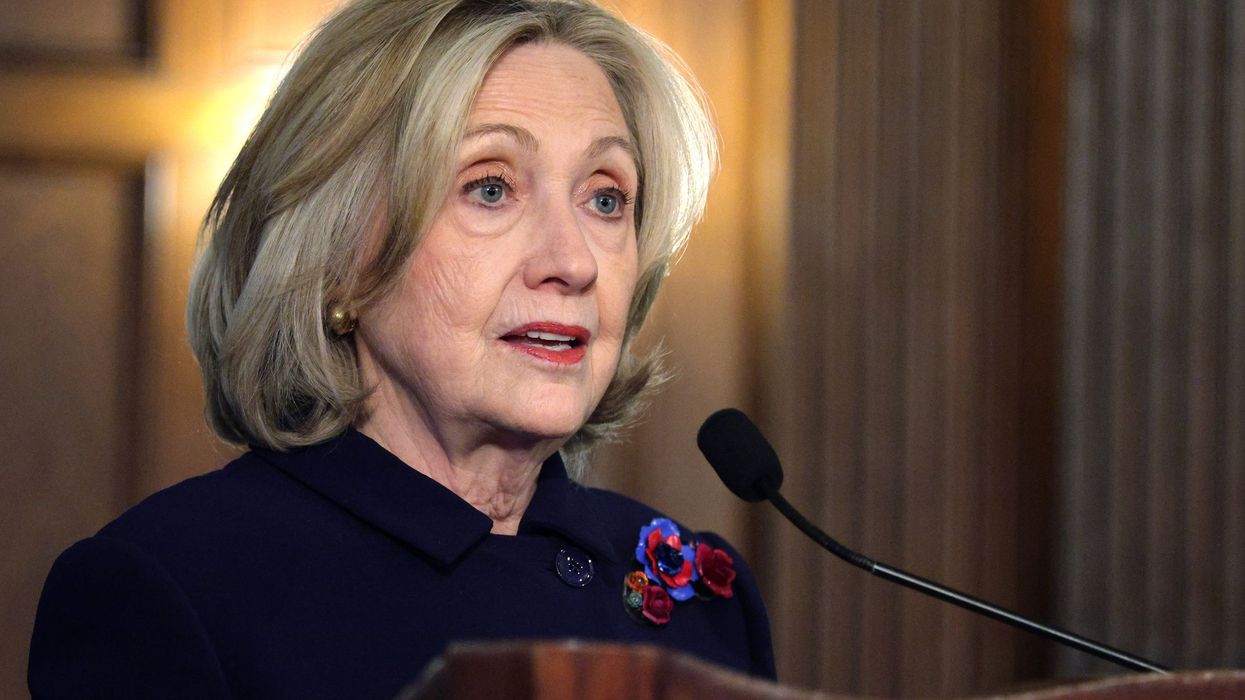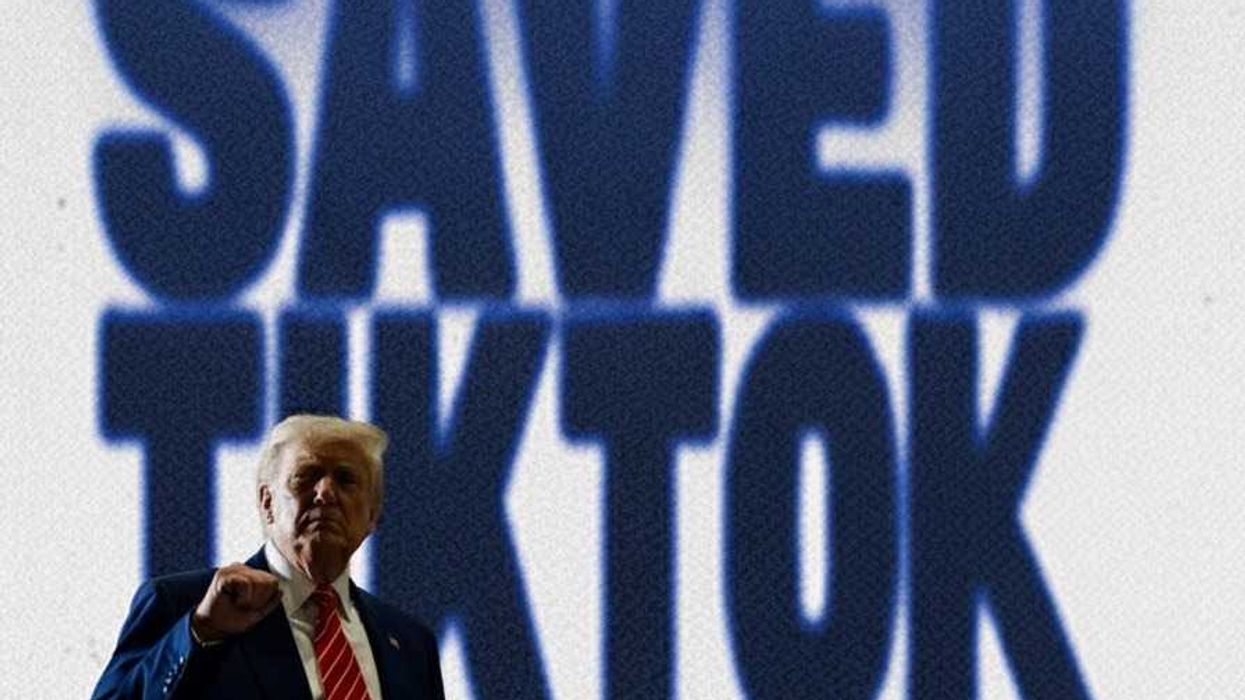Hillary Clinton Joins in Blaming TikTok for Young Americans' View That Israel Is Committing Genocide
"I guess Hillary Clinton also thinks that Amnesty International called what’s happening in Gaza a genocide because they saw some videos on TikTok and just 'did not know history,'" said one observer.
Since Israel began bombarding Gaza and starving its population of more than 2 million Palestinians in October 2023, the consensus that the Israeli government is committing genocide has steadily grown to include international and Israeli human rights groups, a United Nations panel, Holocaust scholars, and nearly 40% of Jewish Americans, according to one striking recent survey.
But in 10 words, former US Secretary of State Hillary Clinton on Tuesday waved away the findings of respected groups like Amnesty International and renowned experts like Brown University professor Omer Bartov, when she commented on why young Americans are expressing support for Palestinians.
"They were getting their information from social media, particularly TikTok," said Clinton.
Without pointing to any evidence, the former secretary of state said young people in the US are "seeing short-form videos, some of them totally made up, some of them not at all representing what they claim to be showing, and that’s where they get their information" about Israel's attacks on Gaza.
She added that "it’s not just the usual suspects"—without naming who those pro-Palestinian "suspects" are.
"It’s a lot of young Jewish Americans who don’t know the history and don’t understand," she said. "A lot of the challenge is with younger people."
Hillary Clinton blames TikTok and “totally made up” videos for young people’s views on Israel and Palestine.
She says social media influenced “not just the usual suspects” but also “young Jewish Americans who don’t know the history and don’t understand.” https://t.co/rUVXRqK2rK pic.twitter.com/hAwG7Gbhwf
— Prem Thakker (@prem_thakker) December 2, 2025
Her remarks echoed those of former Obama White House speechwriter Sarah Hurwitz, who spoke recently about the challenges Zionists are presented with when they try to defend Israel to young Jewish people who have seen widely available, credible images and news out of Gaza, where Israel has killed more than 70,000 Palestinians and is continuing to restrict humanitarian aid despite a ceasefire deal reached in October.
"Anything that we try to say to them, they’re hearing it through this wall of carnage," Hurwitz lamented last month, drawing condemnation.
Clinton was speaking at an event in New York City for Israel Hayom, the most widely read newspaper in Israel, which is run by billionaire Miriam Adelson, a megadonor to President Donald Trump. Adelson published an editorial in the Jewish Journal in November 2023 saying pro-Palestinian protesters "are dead to us," and her late husband, Republican donor Sheldon Adelson, said in 2014 that the Palestinians are "an invented people."
Jeremy Slevin, a senior adviser to Sen. Bernie Sanders (I-Vt.), pointed to the irony of Clinton attending an event associated with the Adelsons and then claiming that "the kids are being radicalized by anti-Israel propaganda."
Clinton has frequently claimed that pro-Palestinian Americans, particularly students who took part in nationwide campus protests last year as they urged the Biden administration to comply with US law and stop funding Israel's attacks on Gaza, are simply misinformed about Palestine and ignorant of history, particularly pointing to the 2000 Camp David Summit hosted by former President Bill Clinton.
The former secretary of state has repeated the claim that the Palestinians were offered a "generous deal" at the meeting and "walked away"—a "myth" that Camp David negotiator Robert Malley has debunked, warning it's been used by Clinton and others to "justify Israel's genocide."
Robert Malley on the myth of “Palestinians walked away” at Camp David (July 2000):
➤ Malley says the popular story pushed since 2000 – that Arafat rejected a “generous offer” – is contradicted by the actual record. Israeli PM Barak sidelined the Palestinians for a year,… pic.twitter.com/3vlf1Rl4qj
— Drop Site (@DropSiteNews) November 28, 2025
"She’s the one getting the history wrong," including at the Israel Hayom event, said Drop Site News on Tuesday.
A number of observers took issue with Clinton's suggestion that anti-Israel sentiment in the US is being driven solely by young people, with Just Security executive editor Adil Haque issuing a "periodic reminder that the biggest shift in attitudes toward Israel and Palestine has been among older Democrats."
In 2022, 43% Democratic voters ages 50 and up had an unfavorable view of Israel. That percentage has risen sharply since Israel began its onslaught in Gaza, with 66% of those voters reporting an unfavorable view in a Pew Research Center poll this year.
Meanwhile, 71% of Democrats ages 49 and under opposed Israel in the same poll, and 62% of them had expressed opposition in 2022, denoting a less extreme shift in opinion.
"Democrats get their news from CNN more than other mainstream sources," said Haque, pointing to the network's recent investigation about Palestinian aid-seekers who were killed by Israeli forces. "If you're a 60-year-old with grandkids and you read or watch CNN's Gaza reporting, you don't need TikTok to know that what's happening is very, very wrong."
Dylan Williams, vice president of government affairs at the Center for International Policy, also suggested Clinton has an inaccurate view of who opposes Israel's ongoing attacks on Palestinians.
"I’m nearly 50. I don’t use TikTok. I listen to NPR 'Morning Edition' and read the Financial Times daily," said Williams. "I’m a lawyer who has worked on Israel-Palestine issues for the last 20 years. The evidence I’ve seen that Israel committed atrocities including genocide in Gaza is overwhelming."
Author Jason Overstreet wondered how Clinton would explain the findings of human rights groups like Amnesty International and Israel-based B'Tselem, which pointed to testimonies by Israeli soldiers and the documented destruction of Gaza's food system when it concluded in a report in July that Israel is committing genocide in the exclave.
"I guess Hillary Clinton also thinks that Amnesty International called what’s happening in Gaza a genocide because they saw some videos on TikTok and just 'did not know history,'" said Overstreet. "Young people’s views on Israel are based on young people knowing that Israel has committed genocide."


